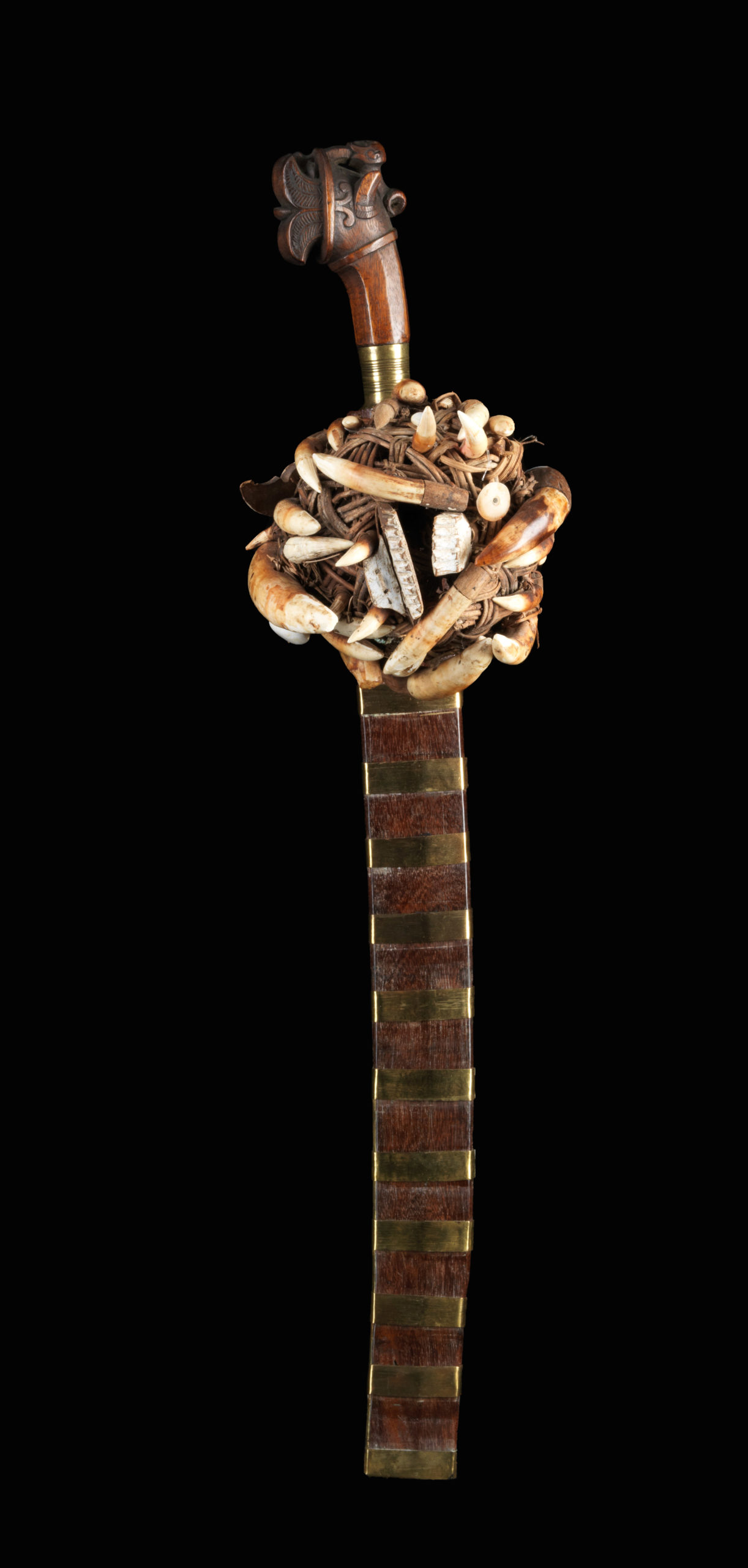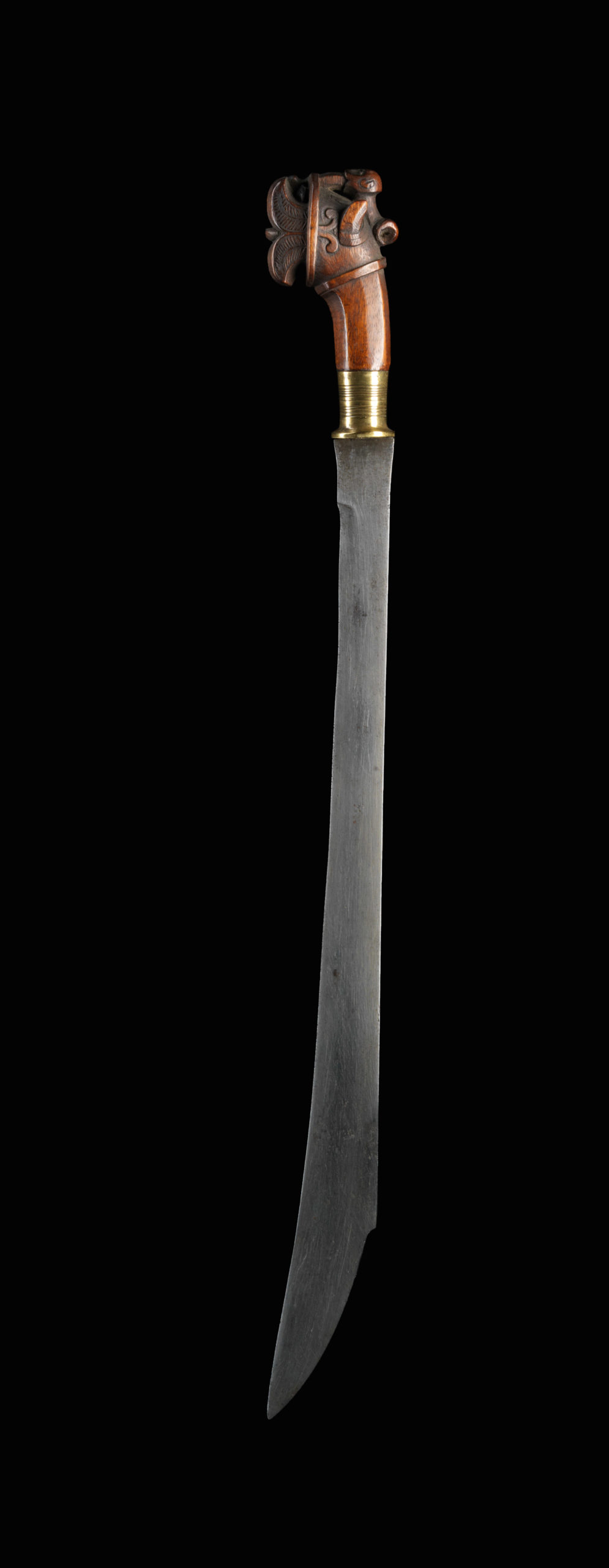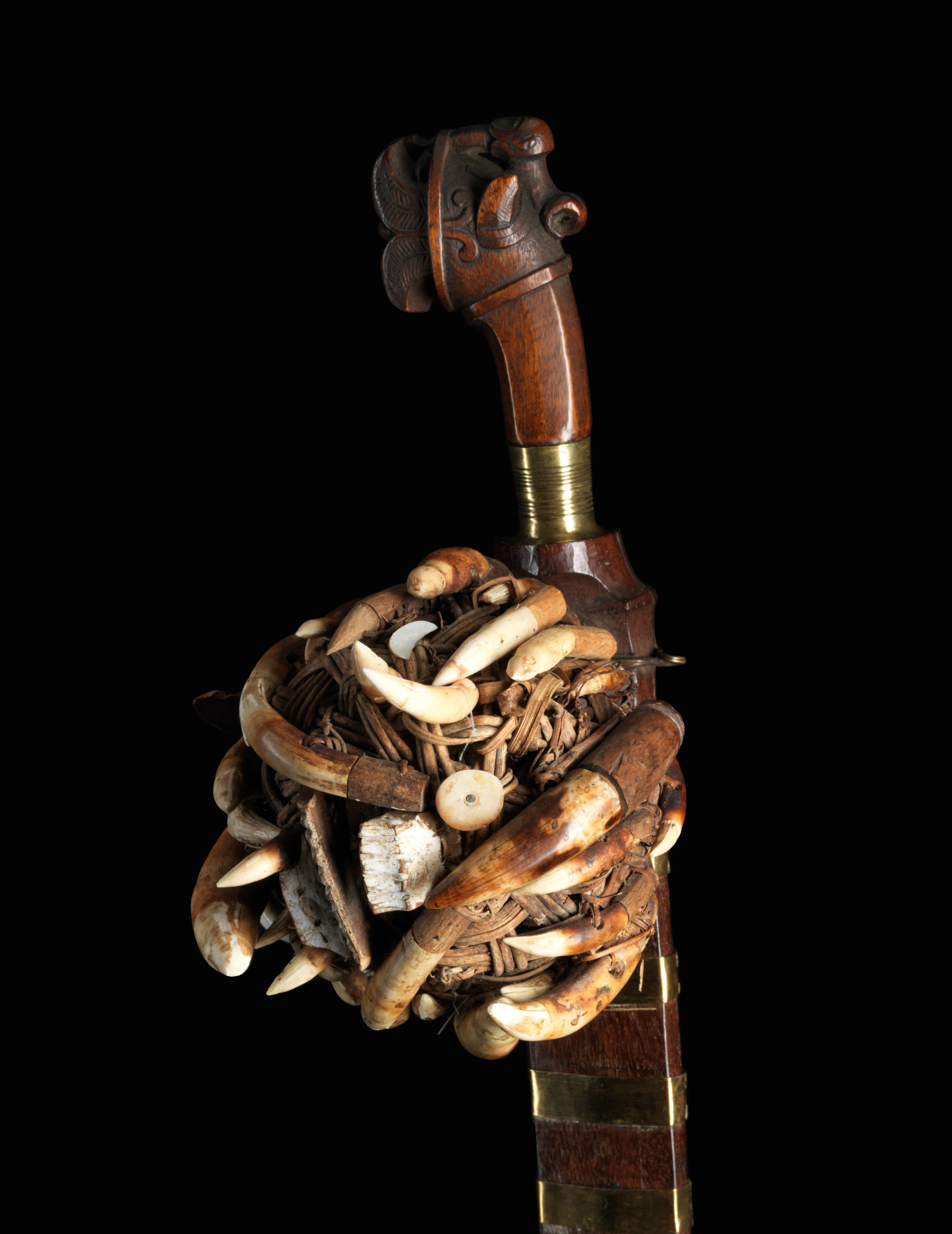Sword „balato“
Balato with lasara heads were only allowed to successful warriors and chiefs. This is the case because the sacrifice or primordial killing process and its replenishment in the context of headhunting is seen as a merit to the community. It was a sacred duty, so to speak. As a proof of the warrior’s potency, it symbolizes the warrior’s position as a mediator between the planes of existence. For the lasara is the magically powerful primeval dragon of the underworld, or the sea, to whom the sacrifice is ultimately directed as a guarantor of fertility.
Stones and other organic and inorganic talismans and things of special magical potency are placed in the talisman basket on the sword and magically “secured” with red cloth. The tiger claws and teeth on the fetish basket were imported from Sumatra and were an explicit privilege of the warrior elite. Red cloth strips in or on the raga ifo boaya, the fetish basket, fulfil a similar function to those on the handle of the parang landung or kampilan, which are by no means only pragmatically to be understood as “slip protection”. Textiles have always had a special meaning. They are to be seen as a materialisation of the female side in the sense of fertility; which is why weaving, e.g. in the Dayak, is also called the fight, kajau, of women. Also, red stripes of fabric embody a thrusting prayer in Buddhism and Islam.
Since tigers have not been seen on Nias and Sumatra for a long time, it is remarkable to see an amulet basket with tiger canines on a balato. Such a sword would be quite old in any case and would have belonged to a high-ranking warrior.
| Object | Sword „balato“ |
| Culture | South Nias |
| Time | Around 1900 |
| Dimensions | length 65 cm |
| Material | Steel, wood, brass, textile, rattan, tiger teeth |







